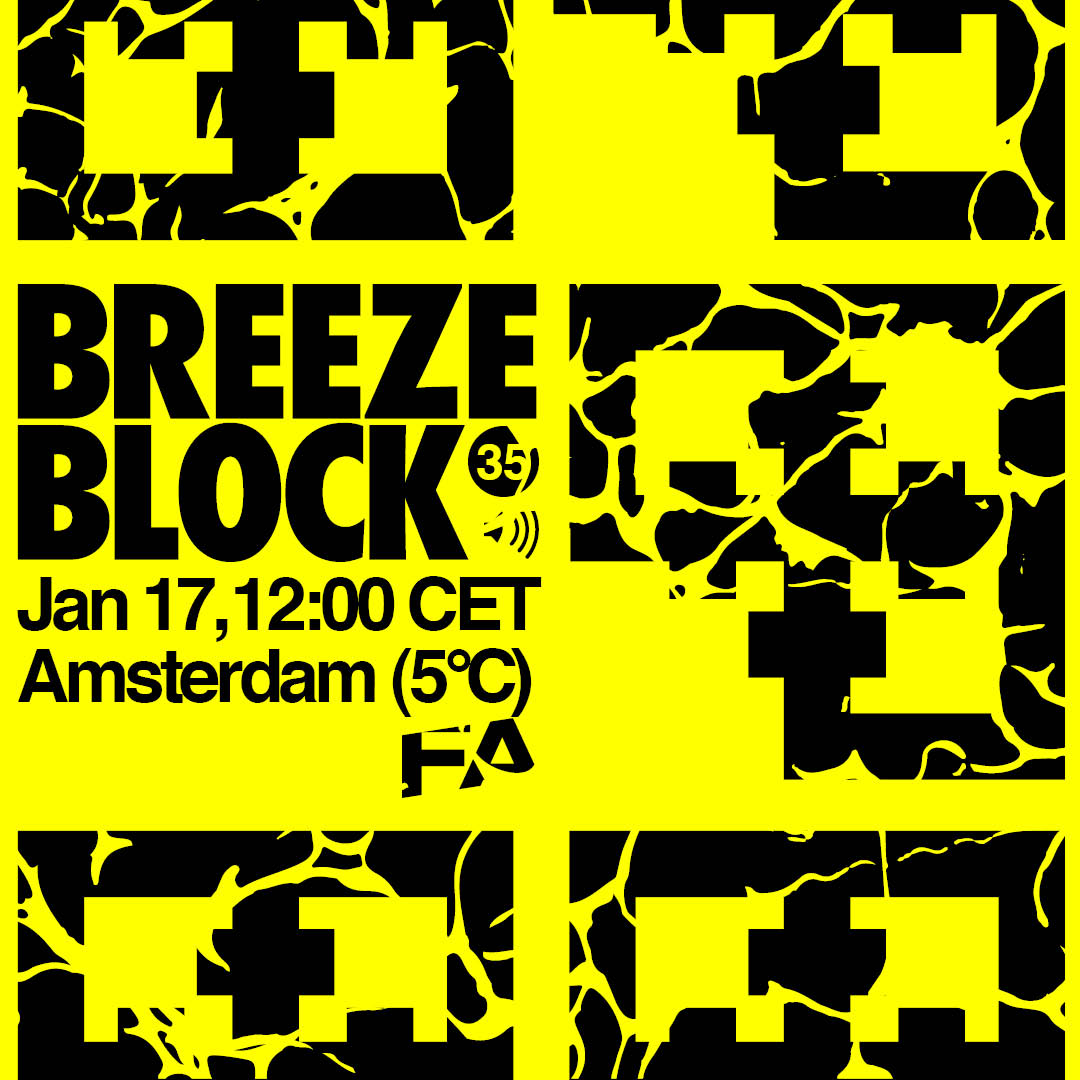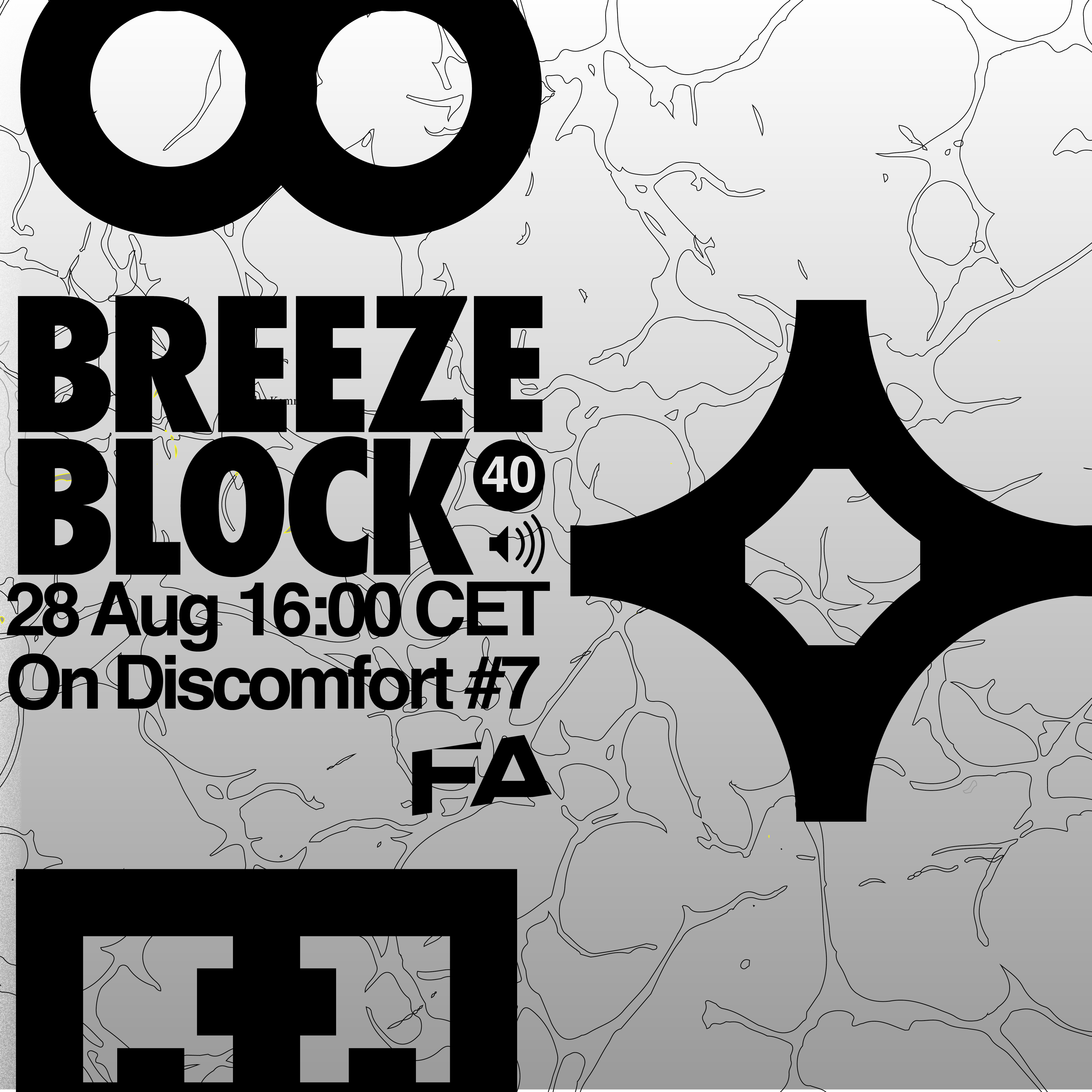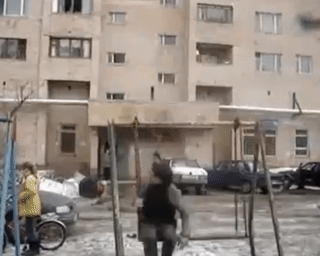Episode Transcript
Speaker 0 00:00:04 Welcome to Feld architecture, breeze blocks. Wow. Editors share their thoughts on works in progress, urgent matters, and current happenings in architecture and spatial politics. Right. My name is Charlie <inaudible>. I'm joined by my fellow editor Renee. Hi Renee. Hi attorney. So, um, we're, as you can probably guess from the potential echo in the room, we're in the base of operations, the felt architecture office in the heart of the red light district in Amsterdam. And, um, in a way, I guess that is the topic of our conversation when a, the, I think kind of just before the pandemic hit, is that right? Uh, uh, manifesto volun 2020, uh, about the neighborhood, a sort of alternative statement about what direction the neighborhood should go in.
Speaker 1 00:01:00 You can find a link to the violin 20, 20 manifesto in the show notes,
Speaker 0 00:01:04 Right? Maybe it would be good to talk a little bit about the neighborhood and also, uh, what prompted you to do the manifesto?
Speaker 2 00:01:13 Yeah, so we're here at the field architecture office in the middle of the red light district in Dutch. It's known as the, as the Villa and maybe from now on, I will just use that word and we've been here for five years and over time we really started to get to know, to get to know the neighborhood really well and how it functions. But also we start to understand better some of the pressures that are on the, on the neighborhood that are pretty intense and what you've seen over, especially the thing the last two years is this increasing pressure to basically clean up and sanitize the neighborhoods. It used to be a pretty rough neighborhoods with a lot of criminality, a lot of drug problems, but I mean, that's all long gone and we're now at a stage that the neighborhood is actually really interesting.
Speaker 2 00:01:56 It's really layered. It's really complex. It's home to many different communities. It's really intense and a very beautiful and interesting part of the city. And I think he had a pressure to sanitize it and get some of the, let's say, slightly rougher functions for which the neighborhood is also known, for example, the sex work, but also some of the liberties around drugs to get it out of the neighborhoods and turn it into your average Amsterdam, a nice historical neighborhood. And I think that pressure is increasing and I try to give some counterbalance to that, to that pressure.
Speaker 0 00:02:31 So, so there's these sort of like conflicting visions of what direction the, um, the neighborhood should be going in. Right. And, um, the two articles you said, um, you know, really talk about the, um, the, the neighborhood as if it's a problem that needs to be solved.
Speaker 1 00:02:52 The two pieces I refer to here are an article in Aperol by Jeff Hamal, for which the title translated from Dutch is in quotation marks, turn the center of Amsterdam into a garden and an article in trail by Hans <inaudible>, for which the title translated from Dutch's ombudsman raises the alarm. The center of Amsterdam is a lawless jungle at night links to both articles are available in the show notes.
Speaker 0 00:03:18 One of the things that sort of jumped out where these kind of descriptions of the area as an urban jungle, really like evocative of the kind of urban renewal narratives that we've had since like the sixties, seventies, that kind of thing, the idea that their city should be cleansed of, it's kind of unruly elements. Could you talk a bit more about that?
Speaker 2 00:03:40 Yeah. Yeah, it's good. It's good. You're saying that because the neighborhood is being presented as a problem, but it's not a problem at all. I mean, it's pretty intense. There's a lot of people coming here to visit it and see and enjoy the neighborhood. It is very complex and layered. So is there sex work is going on for which is most famous, but there's also a Chinatown. It has a large LGBTQ plus community. There's a lot of, and it's also like a historic neighborhood. So there's a lot of complex communities and layers that relate to each other. And that's what makes it so interesting. And I think there's a few groups in the city and that's our particular also, let's say the heritage phonetics in the city were kind of pushing, you had to clean it up and they have also kind of introduced this kind of terms of the urban jungle. And what is interesting is that also the municipality is kind of taking this on and then they hired some kind of urban researcher quite locally well-known figure actually to produce like a counter plan or like a plan for the future of the neighborhood. And he stayed within this like nature and natural terms. And he proposed to turn the urban jungle into a monumental garden, which, which kind of says it all right.
Speaker 0 00:04:47 Yeah. I mean, it's inherently a historical, isn't it? I mean, it's not actually in line with the historical development of the center of Amsterdam of development, like to, to turn the center of the city into a garden. That's not like heritage, that's kind of counter to the history of it. Wouldn't you say?
Speaker 2 00:05:06 Yeah, definitely. Yeah. I mean, on the one hand, yes. So it's kind of counter to what Amsterdam stands for, what, what it has been, what it also, there's also a counter to what a city is, right? Like an intense place for encounter and cultural societal progress in general. And, but on the other hand, like you can also say it's an historical continuity because most of Amsterdam has becoming quite a polished. And as we like to say, like smooth kind of city, right. And had the valley is the only neighborhood that is still a bit of an unruly piece of urbanisms. So actually to incorporate the Vela within the larger smooth city of Amsterdam is actually, let's an historical continuity in that point of view. Right. It's the final step of to get to that in a sec.
Speaker 0 00:05:51 But I wanted to also talk about just this element within the, um, the parole article that you sent. Yeah. The article from FMO. Right. Um, it starts off really reasonably, like you read a lot of it and you're kind of like, yeah. Like we, in a way have lost an element of like the idea, the center of the city is this place where people come together, you know, the Gora where like citizens actually go through, you really do feel that in Amsterdam, there's a lot of like reasonable elements to the analysis in that he makes, is it here or in here? Um, yeah. Uh,
Speaker 2 00:06:28 I, I really don't agree there on that point. I will,
Speaker 0 00:06:31 No, let me just say like, you can see where it's not that I agree necessarily. I just think that you can see it's, it's, it's sort of resonating with certain people's like frustrations about, oh, like going through the middle of the city, there's too many tourists, right. It is like Chi-Ming with a frustration that I think probably a lot of us Amsterdamers and just people residing here find, uh, with the center, you know, and the number of tourists, but like, yeah, I'd be really interested to hear like your counter point that, you
Speaker 2 00:07:00 Know, I mean, I think the social cohesion in a neighborhood is actually really large and much larger than in like the polished, boring and sanitized neighborhoods outside of the city center that on the one hand, and on the other hand, there's this idea of the fact that this neighborhood might not relate to the city's inhabitants anymore. I also don't think that's true if you see like also locals will actually visit the sex workers, but also like for example, a local art scene has its base here. So it has a lot of local, I mean, it's totally
Speaker 0 00:07:29 Like, how will you define the locals, right? Like who are the they? And it is saying like, it is Bruce White elements in the rest of the sort of smooth Amsterdam city, trying to lay claim to the final vestige of something that doesn't represent them. But actually it comes back to this question of like continuity, right? It's like what could be more continuous than the people who have been here for many years who still maybe do benefit from this sort of red light district as it is anyway, that point maybe brings me to the, maybe the last one. I don't know, maybe the last thing I wanted to bring up about like what the future is, you know, like, um, you posted the other day, this like picture of a rendering from Moke architect. And I think I got that right. Sort of a proposal for a development, which basically puts the red light district in a building, uh, on the, I dunno, where it would be anywhere on the outskirts of Amsterdam. Yeah. Very worth taking a look at it's quite a striking architectural intervention. I wouldn't call it a very interesting or very good one, but I mean, maybe interesting in sort of showing the, like how heinous the architectural profession is when it's at its worst, but maybe you could talk a little bit more about what the details are of this proposed development and what it means or what it could mean for the red light district.
Speaker 2 00:08:55 Yeah. So what is interesting is that I probably this manifesto early March just before the lockdown, when the red light district to develop is still full of people and still it's itself. And then the lockdown happened and two days later everyone was gone, everything was closed. And it turned into like this really boring, quiet village. And suddenly there was also this discourse like, oh, this is the kind of violence that we should have. And now we actually have our monumental garden. Right. So how are we going to preserve this
Speaker 0 00:09:20 Kind of fit feeds into this narrative of like nature is
Speaker 2 00:09:23 Healing, right? Yeah. So over the last half year, I think the pressure to keep this kind of Vela and to implement change, to keep it this way is actually growing by the day. And also the mayor introduced all kinds of new policy proposals and they apparently also worked with architects and investors to propose these alternatives. And what's actually, yeah, she will, she will unveiled the actual plans probably in the coming week, which will include his new erotic center on the outskirts of Amsterdam in this really ridiculous kind of architectural imagination that they produced. And they're probably also going to announce to close most of the windows within the area and also make sure that the coffee shops can only cater to people with Dutch passport as part of a larger package of measures here in the neighborhood. But what is interesting is that like the sex workers don't want to move the coffee shops are not a problem. So in, in overall what you see is that this is this process of like sanitizing the neighborhood that has no grounding in some of the problems that, that might be there, but are actually not really there.
Speaker 0 00:10:31 Yeah. I mean, it might be worth having a look at this at this rendering. Right. I really want to come back to it. Cause I think it is just, uh, it's, it's really like, I mean, it is quite despicable in a way, I guess the sort of implications it has for like, you know, this, as you say, the sort of sanitization of the neighborhood is it's like tabula, rasa kind of architecture at its worst, isn't it really
Speaker 2 00:10:50 Like also the audacity of the architects, right? That like you're being asked by the mayor like, Hey, can you just quickly draw up this architectural thing without consulting the people we're going to use it. Right. The sex workers and the people are going to,
Speaker 0 00:11:03 I mean, it's, it's really like the last straw that it's red, like it's bright red, right? Like it, you know, it's sort of, okay, you know, you, you can't have your red light district, but you can have a building that's red, you know, like it's so, so disrespectful. Um, yeah, I don't know. Um, but the, the whole thing, do you have the feelings that the momentum is in favor of the, the current process and where do you think your manifesto might be able to fit in, I guess, today to respond to this? Yeah. Yeah.
Speaker 2 00:11:33 That's a good question. I mean, currently there is not much organization within a neighborhoods and I hope really that they're counter manifested that I've wrote that it opens people's eyes on the, how great the neighborhood actually is and how it's a home for many different kinds of communities and how it offers qualities that you really don't have in the rest of the city, in like this intensity, this sensorial delusions almost right. And I think that is really something that is also worth preserving or not only preserving, but also like actualizing and extending it into the future rather than cutting it short. And I really hope that this counter manifesto works maybe as a bit of a mobilizing tool around that. It's been shared a lot in the neighborhood and I hope it works as a bit of a counterbalance when in the coming weeks, the new plans are being interviewed by the mayor. So, but yet there's a lot of organizing that still needs to happen if we want to prevent it. Because I think the forces of the, of the smooth city that want to incorporate this neighborhood within the rest of the city are pretty big. Well,
Speaker 0 00:12:39 Okay. Thanks Renee. Thank you, Tony.


